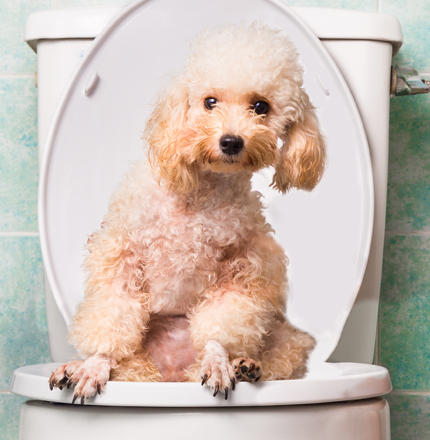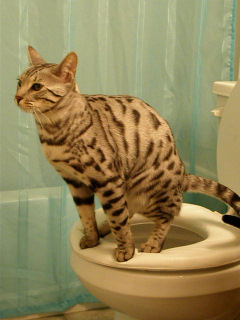What are your opinions with regards to Should you flush animal waste down the toilet?

When it involves dealing with waste, particularly animal waste, lots of people typically turn to the convenient choice of flushing it down the bathroom. However, this seemingly very easy service can have severe consequences for the setting and public health. In this short article, we'll check out why flushing animal waste down the commode is a negative idea and provide alternate approaches for proper disposal.
Intro
Correct waste disposal is crucial for maintaining environmental sustainability and public health. While it might appear safe to purge animal waste down the bathroom, it can result in different issues, both for the atmosphere and human well-being.
Risks of flushing pet waste
Environmental impact
Flushing pet waste presents unsafe germs and pathogens right into rivers, which can adversely impact water environments. These virus can contaminate water sources and harm aquatic life, interfering with delicate communities.
Public health concerns
Animal waste has dangerous bacteria such as E. coli and Salmonella, which can pose major wellness threats to humans. Purging pet waste down the toilet can contaminate water supplies, leading to the spread of conditions and infections.
Alternatives to flushing
Rather than flushing animal waste down the toilet, there are several alternative disposal methods that are extra environmentally friendly and hygienic.
Composting
Composting pet waste is an environmentally friendly way to deal with it. By composting, organic matter is broken down right into nutrient-rich soil, which can be made use of to feed gardens and plants.
Land fill disposal
Disposing of pet waste in a garbage dump is one more option. While not as environmentally friendly as composting, it is a much safer choice to flushing, as it stops the contamination of water resources.
Animal garbage disposal systems
There are specific animal waste disposal systems readily available that securely and hygienically throw away pet waste. These systems typically make use of enzymes to break down waste and eliminate smells.
Actions to correct pet garbage disposal
To guarantee correct disposal of pet waste, adhere to these steps:
Scooping and getting waste
Routinely scoop and bag animal waste using biodegradable bags. This prevents waste from contaminating the environment.
Making use of marked waste containers
Dispose of bagged pet waste in assigned waste bins, such as compost containers or land fill containers. Stay clear of flushing it down the bathroom in all prices.
Cleaning up litter boxes and pet locations consistently
Consistently clean can and pet dog areas to stop the buildup of waste and bacteria. Usage pet-safe cleansing items to preserve hygiene.
Advantages of appropriate disposal approaches
Adopting appropriate disposal methods for animal waste provides a number of benefits:
Lowered environmental pollution
Correct disposal techniques minimize the threat of environmental pollution, protecting waterways and ecosystems from contamination
Lessened risk of water contamination.
By staying website clear of flushing animal waste down the toilet, the risk of water contamination is dramatically decreased, securing public health.
Boosted cleanliness and health
Correct disposal approaches advertise far better hygiene and hygiene, producing a much safer setting for both human beings and animals.
Conclusion
To conclude, flushing pet waste down the toilet is damaging to the atmosphere and public health. By adopting alternate disposal approaches and complying with proper waste administration practices, we can lessen the negative effect of pet waste and add to a cleaner, healthier world.
What To Do With Dog Poo – The Do's And Don'ts Of Disposing Of Faeces
Dog poo bins
Some councils provide dedicated dog waste bins in popular dog-walking areas that can take dog poo that has been bagged but you can legally dispose of dog waste in any public litter bin, as long as it is securely bagged. This also applies to your wheelie bin at home.
Do not flush
Water companies do not recommend flushing dog faeces down the toilet because certain parasites can survive the water processing treatment and are potentially harmful to humans. You should also never consider flushing dog poo that has been bagged down the toilet as the bags will not break down and instead create severe blockages in the sewage system.
In the woods
The Forestry Commission promotes a ‘stick and flick’ method for dealing with waste in the woods. This means finding a stick and using it to flick any poo from off the path so that it is out of the way of other walkers. You could also bury it as long as it is not in an area where there might be livestock.
Livestock
Parasites found in dog poo can be transmitted to livestock if they inadvertently eat infected faeces that has been left on grazing land. This could result in the death of sheep or abortion in cattle so you should always make sure you pick up your dog’s waste in fields where livestock could be present.

Consistently clean can and pet dog areas to stop the buildup of waste and bacteria. Usage pet-safe cleansing items to preserve hygiene.
Advantages of appropriate disposal approaches
Adopting appropriate disposal methods for animal waste provides a number of benefits:
Lowered environmental pollution
Correct disposal techniques minimize the threat of environmental pollution, protecting waterways and ecosystems from contamination
Lessened risk of water contamination.
By staying website clear of flushing animal waste down the toilet, the risk of water contamination is dramatically decreased, securing public health.
Boosted cleanliness and health
Correct disposal approaches advertise far better hygiene and hygiene, producing a much safer setting for both human beings and animals.
Conclusion
To conclude, flushing pet waste down the toilet is damaging to the atmosphere and public health. By adopting alternate disposal approaches and complying with proper waste administration practices, we can lessen the negative effect of pet waste and add to a cleaner, healthier world.
What To Do With Dog Poo – The Do's And Don'ts Of Disposing Of Faeces
Dog poo bins
Some councils provide dedicated dog waste bins in popular dog-walking areas that can take dog poo that has been bagged but you can legally dispose of dog waste in any public litter bin, as long as it is securely bagged. This also applies to your wheelie bin at home.
Do not flush
Water companies do not recommend flushing dog faeces down the toilet because certain parasites can survive the water processing treatment and are potentially harmful to humans. You should also never consider flushing dog poo that has been bagged down the toilet as the bags will not break down and instead create severe blockages in the sewage system.
In the woods
The Forestry Commission promotes a ‘stick and flick’ method for dealing with waste in the woods. This means finding a stick and using it to flick any poo from off the path so that it is out of the way of other walkers. You could also bury it as long as it is not in an area where there might be livestock.
Livestock
Parasites found in dog poo can be transmitted to livestock if they inadvertently eat infected faeces that has been left on grazing land. This could result in the death of sheep or abortion in cattle so you should always make sure you pick up your dog’s waste in fields where livestock could be present.

I'm very fascinated by 4 Reasons Why Dog Poop Cleanup is Important and I am praying you enjoyed reading the blog posting. Enjoyed reading our blog entry? Please quickly share it. Help another person check it out. Thanks so much for your time invested reading it.
Schedule Free Estimate